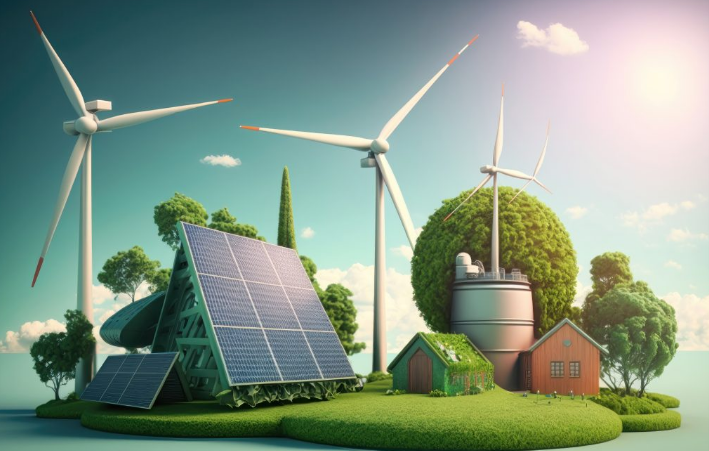Renewable energy sources such as solar and wind power are crucial for reducing carbon emissions and transitioning towards a sustainable energy future. However, the intermittent nature of renewable energy generation poses challenges for grid stability and reliability. Renewable energy storage technologies play a pivotal role in mitigating these challenges by storing excess energy during periods of high generation and releasing it during times of high demand. This article explores the importance, key technologies, benefits, challenges, and future advancements in renewable energy storage.
Importance of Renewable Energy Storage
- Grid Stability and Reliability: Renewable energy storage helps balance supply and demand mismatches by storing surplus electricity generated during off-peak periods and supplying it during peak demand, thereby stabilizing the grid.
- Integration of Variable Renewables: Facilitates the integration of variable renewable energy sources (solar, wind) into the grid by providing a reliable backup supply and reducing curtailment of excess renewable generation during periods of low demand.
- Energy Independence and Resilience: Promotes energy independence by reducing reliance on fossil fuels, enhancing energy security, and building resilient energy systems capable of withstanding disruptions and blackouts.
Key Technologies in Renewable Energy Storage
- Battery Energy Storage Systems (BESS): Lithium-ion batteries and other advanced battery technologies store electricity for short durations, provide fast response times, and are used for grid stabilization, frequency regulation, and peak shaving.
- Pumped Hydroelectric Storage: Utilizes surplus electricity to pump water from a lower reservoir to an upper reservoir during periods of low demand. When electricity demand rises, water is released to generate hydroelectric power.
- Compressed Air Energy Storage (CAES): Stores energy by compressing air into underground caverns or tanks. During times of high demand, the compressed air is heated and expanded through turbines to generate electricity.
Benefits of Renewable Energy Storage
- Grid Flexibility and Stability: Enhances grid stability, flexibility, and reliability by balancing intermittent renewable energy supply with fluctuating demand patterns, reducing reliance on fossil fuel-based peaker plants.
- Economic Efficiency: Reduces electricity costs by storing excess renewable energy when generation exceeds demand and releasing it during peak demand periods, thereby optimizing energy use and avoiding high-cost electricity purchases.
- Environmental Sustainability: Facilitates the integration of clean, renewable energy sources into the grid, reduces greenhouse gas emissions, and supports climate mitigation efforts by displacing fossil fuel-based electricity generation.
Challenges in Renewable Energy Storage
- Cost and Economics: High upfront costs of storage technologies, including batteries and infrastructure, and achieving cost parity with traditional fossil fuel-based energy storage options remain significant barriers to widespread adoption.
- Technological Limitations: Limited energy storage capacity, efficiency losses during storage and conversion processes, and the need for continuous technological advancements to improve performance and reduce costs.
- Regulatory and Policy Frameworks: Uncertainty in regulatory frameworks, grid interconnection standards, and incentives for renewable energy storage deployment may hinder investment and deployment in some regions.
Future Advancements and Trends
- Advancements in Battery Technologies: Research and development in next-generation battery chemistries (e.g., solid-state batteries, flow batteries) to enhance energy density, cycle life, safety, and reduce costs for grid-scale energy storage applications.
- Hybrid Energy Storage Systems: Integration of multiple storage technologies (e.g., batteries with pumped hydro or CAES) to leverage complementary strengths, optimize energy storage capacity, and enhance grid resilience and stability.
- Smart Grid Integration: Deployment of advanced grid management technologies, smart grid solutions, and demand response programs to optimize renewable energy storage, enhance grid flexibility, and support decentralized energy systems.
Conclusion
Renewable energy storage technologies are pivotal for overcoming the intermittent nature of renewable energy sources, enhancing grid stability, and accelerating the transition towards a sustainable energy future. Despite challenges in cost, technological limitations, and regulatory frameworks, ongoing advancements in storage technologies and supportive policies are driving progress in renewable energy storage deployment. By investing in innovation, fostering collaboration, and adopting holistic approaches to energy storage solutions, stakeholders can unlock the full potential of renewable energy sources and build resilient, low-carbon energy systems globally.
